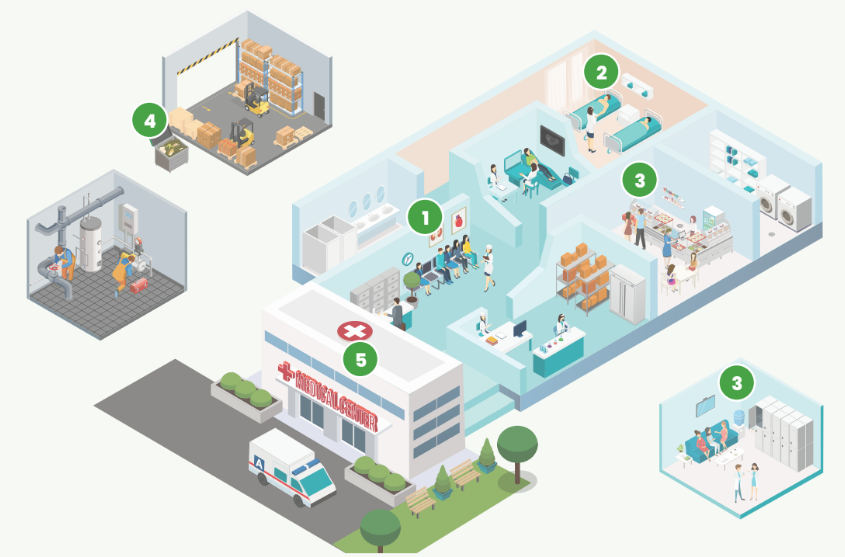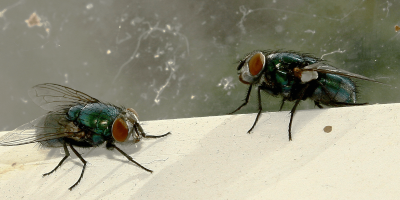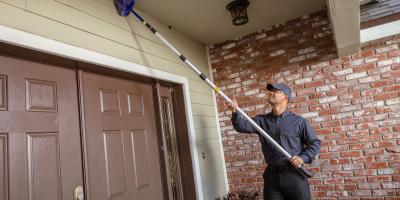IPM in Healthcare: Supporting Compliance

How Integrated Pest Management Supports Infection Control in Healthcare
Healthcare facilities are complex environments with constant movement, sensitive equipment, and strict hygiene protocols. Among the many operational challenges, pest prevention is one that often flies under the radar, until it becomes a problem. Integrated Pest Management (IPM) provides a proactive, system-wide approach to identifying and addressing pest risks before they impact patient care, facility cleanliness, or compliance readiness.
The Link Between Pest Control and Infection Prevention in Healthcare
In healthcare settings, controlling pests is a crucial part of maintaining sanitation and reducing infection risks. Pests such as flies, cockroaches, and rodents can introduce harmful bacteria and pathogens like Salmonella, E. coli, and Listeria into sterile environments. These pests are often drawn to food waste, standing water, and warm, hidden areas where they can breed undisturbed.
In environments where vulnerable patients are already at risk, even minor pest activity can compromise the cleanliness of clinical tools, surfaces, and patient rooms. Pest infestations in healthcare facilities not only threaten infection control efforts but also increase the potential for Healthcare-Associated Infections (HAIs), a key metric in both patient safety and regulatory oversight.
Benefits of IPM in Medical and Healthcare Settings
IPM is more than just pest removal, it’s a proactive, prevention-first approach that focuses on minimizing conditions that attract pests in the first place. In healthcare facilities, this approach is particularly beneficial because it limits the need for chemical use and emphasizes environmental management, sanitation, and monitoring.
Key components include:
- Exclusion and structural maintenance: Sealing cracks, repairing screens, and installing door sweeps to keep pests out.
- Monitoring and identification: Routine inspections and strategically placed traps to detect early signs of activity.
- Sanitation alignment: Collaborating with housekeeping and janitorial teams to eliminate pest attractants like food residue and organic waste.
- Low-toxicity solutions: When treatment is necessary, IPM uses reduced-risk products and methods that are safe for sensitive healthcare environments.
How IPM Strengthens Healthcare Compliance
Pest-related issues can lead to failed audits, regulatory citations, and damage to your facility’s reputation. Regulatory agencies such as the Joint Commission, the Centers for Medicare and Medicaid Services (CMS), and the Centers for Disease Control and Prevention (CDC) all emphasize pest control as part of infection prevention protocols.
An effective IPM program provides comprehensive documentation to support compliance efforts, including:
- Logbooks showing service visits, pest activity, and corrective actions
- Sanitation reports and risk assessments
- Floor plans highlighting pest monitoring locations
- Recommendations for facility-specific improvements
This level of detail demonstrates that your facility takes a structured, consistent approach to pest management and infection prevention, something auditors and inspectors increasingly expect to see.

Curious how IPM can transform your compliance outcomes?
See how one healthcare facility overcame audit risks and improved operational efficiency with JP Pest Services.
High-Risk Zones That Require Attention
Pests don’t just appear in obvious places. Many infestations begin in lesser-seen zones such as loading docks, utility rooms, and staff break areas, spaces that are not always included in daily cleaning routines but can still contribute to broader contamination issues.
Flies, for example, are frequently found near drains or kitchen prep areas and can carry pathogens from trash bins to sterile surfaces. Rodents may access facilities through small wall gaps or utility lines and contaminate storage areas with droppings and nesting material. A strong IPM program doesn’t just focus on patient rooms, it includes every part of the facility that could be a potential pest entry or breeding point.

Want to identify hidden risk areas in your facility?
Download our Healthcare Site Risk Map a free, visual guide to the top pest entry points across medical environments.
Implementing a Thoughtful, Low-Impact Pest Management Strategy
A low-impact IPM approach should aim to complement patient care, not interfere with it. Discreet services and digital reporting are essential for minimizing disruption while keeping track of pest trends and risk areas.
Cross-departmental awareness also plays a role. Janitorial teams, food service staff, and facilities management must work together to maintain consistent standards, quickly respond to signs of pest activity, and reduce attractants.
Building a Culture of Prevention and Awareness
Educating staff on pest prevention practices can enhance the effectiveness of IPM. Encouraging routine reporting, sharing best practices between departments, and reinforcing sanitation habits all contribute to stronger outcomes.
By taking a prevention-first mindset and fostering awareness throughout the facility, pest risks can be identified and resolved early, helping maintain a hygienic, compliant healthcare environment.
Work with a Pest Control Provider That Understands Healthcare
Implementing an IPM strategy tailored to healthcare requires an experienced provider that understands the complexities of medical environments. JP Pest Services trains its technicians specifically for healthcare facility work, ensuring minimal disruption and strict adherence to safety protocols.
Whether you manage a small clinic or a multi-campus hospital system, we help you stay ahead of pest risks and audit challenges.
Book a healthcare pest risk assessment today and discover how JP Pest Services can help reinforce your infection control strategy.



